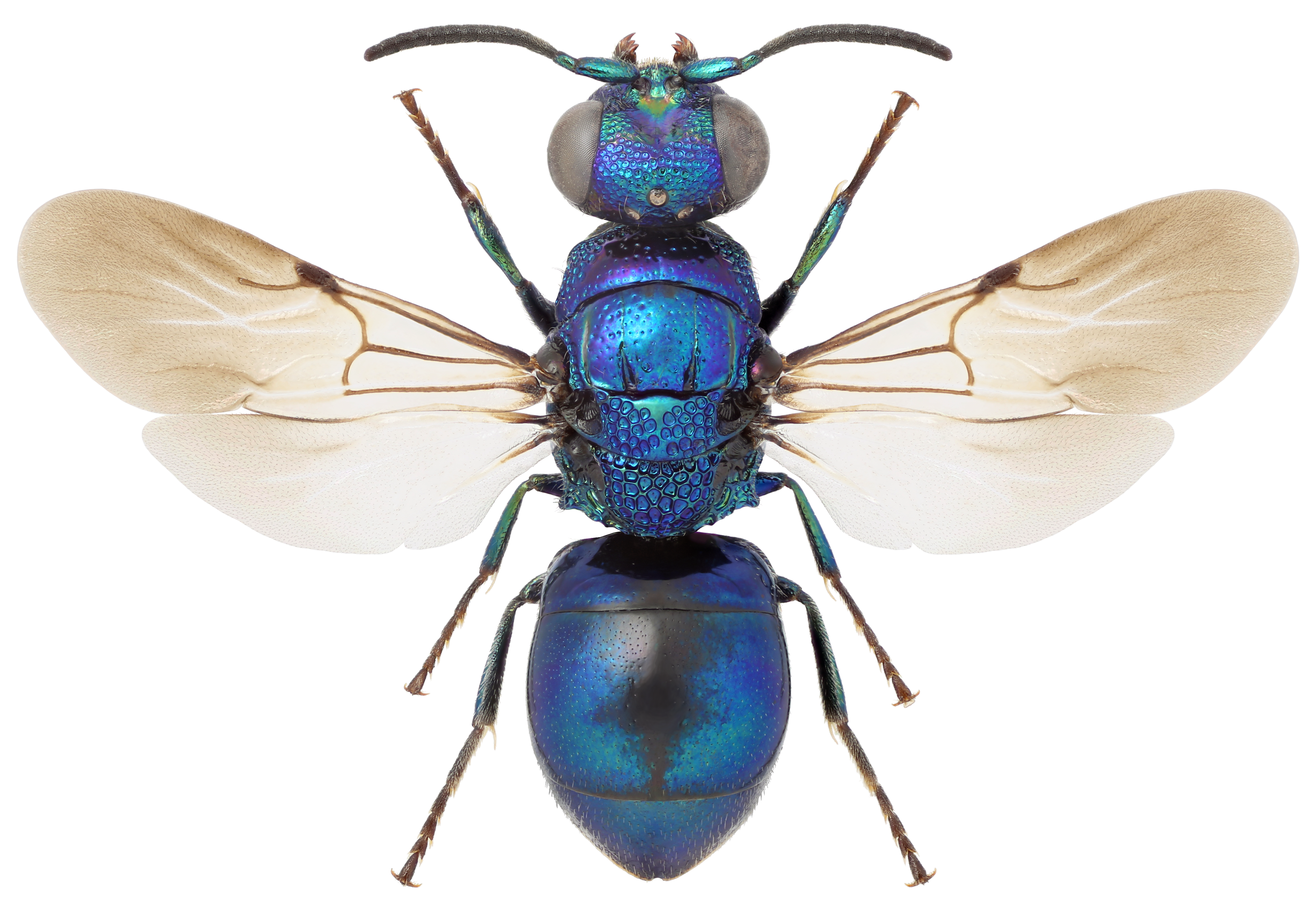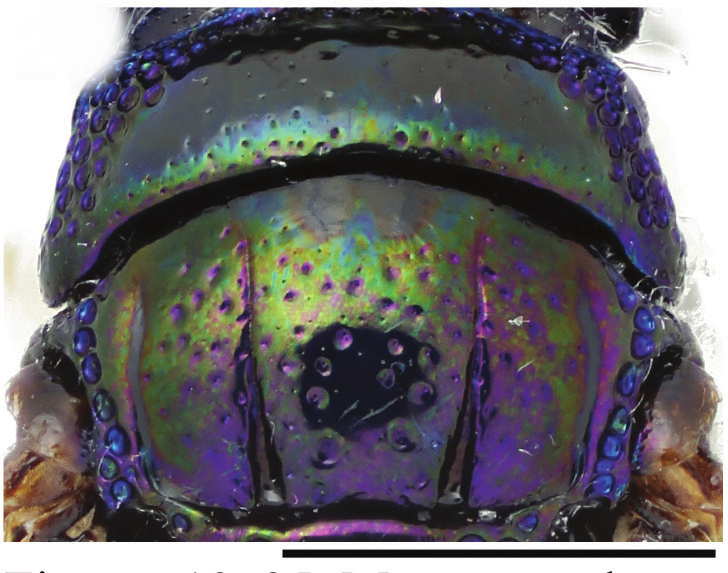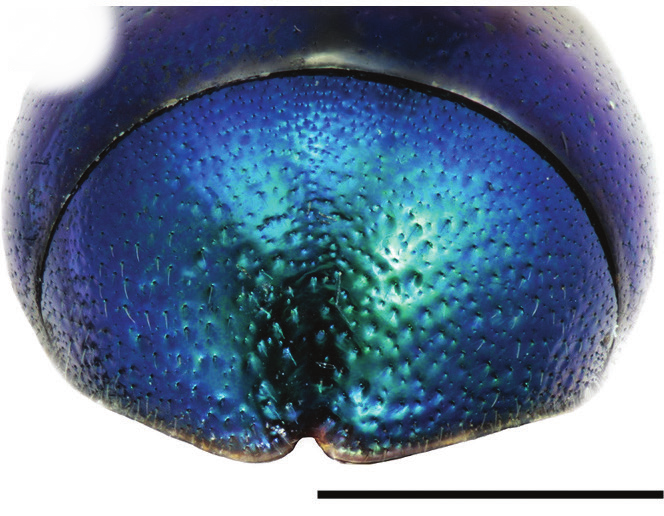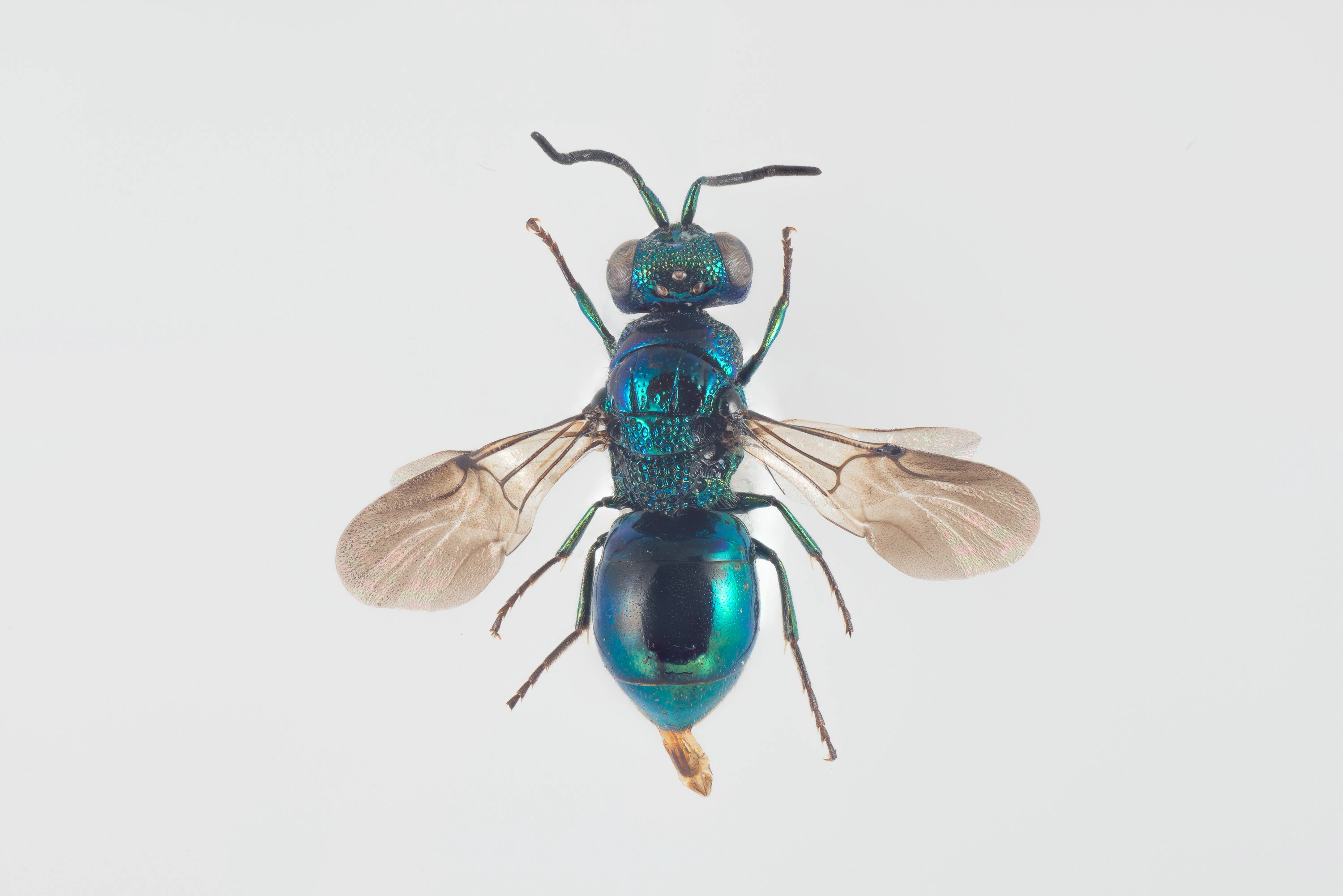Omalus puncticollis
Omalus puncticollis was earlier considered as a synonym to Omalus aeneus. However, results from DNA-barcoding indicate that O. puncticollis is a good species. It is generally rare, but locally common in eastern Norway where it occurs in shrubs and warm slopes with large amounts of dead wood. The hosts are small species of wood living Crabronidae of the genus Passaloecus. The species can be distinguished from Omalus aeneus by the more strongly punctured mesoscutum with long setae.
- Innhold
- Diagnosis
- Distribution
- Biology
- Remarks
Diagnosis
Figure 24
Pronotum and mesoscutum, dorsal view: O. puncticollis ♀. Scale 1 mm.
Figure 25
T3, posterodorsal view: O. puncticollis ♀. Scale 1 mm.
Length 3–6 mm.
The species is easily confused with O. aeneus, but the mesoscutum always has relatively large scattered punctures and long setae (Fig. 24). The pronotum has also larger punctures medially (Fig. 24) and the apical notch of T3 is deeper (Fig. 25). The body colouration is similar to O. aeneus. Habitus of large specimens can sometimes resemble small specimens of Pseudomalus violaceus, but the ventral margin of the mesopleuron is not as strongly projecting in O. puncticollis (as in Fig. 19) and the large punctures of the mesoscutum are not clumped postero-medially.
Distribution
Norway, Sweden. Rare.
West Palearctic (?): Europe, Turkey and northern Africa (Linsenmaier 1959, 1968, 1999). The general distribution is poorly known, because many authors have considered O. puncticollis to be conspecific with O. aeneus.
Be aware that the records present in the GBIF map may be misleading for some countries due to unrevised data sets or missing information.
GBIF Taxon: Omalus puncticollis Mocsary, 1887Biology
Habitat: forest margins and clearings, semi-open sandy areas. Adults are usually found sitting on or flying near leaves of trees and bushes, occasionally also on flowers of Apiaceae (Kunz 1994).
Flight period: June to August.
Host: Passaloecus gracilis (Curtis), P. eremita Kohl, P. corniger Shuckard and P. turionum Dahlbom (Crabronidae) (Spooner 1954, Gauss 1967, Mocsáry 1912).
Remarks
Mitochondrial DNA studies support the recognition of O. puncticollis as a distinct species in relation to O. aeneus (Paukkunen et al. 2014).



